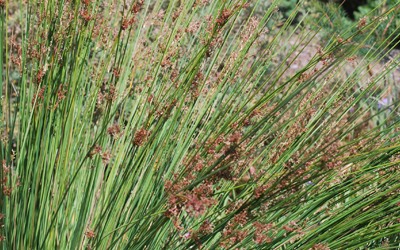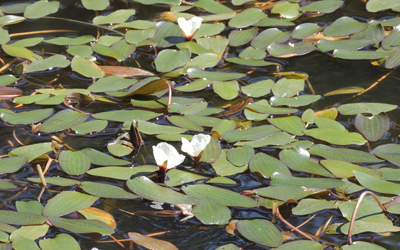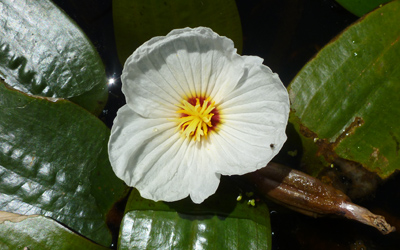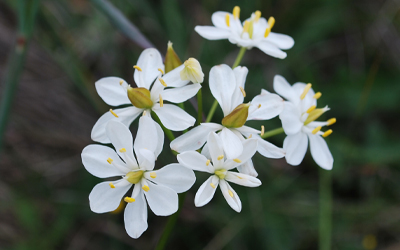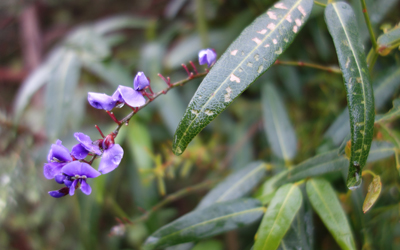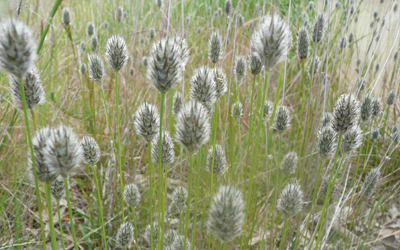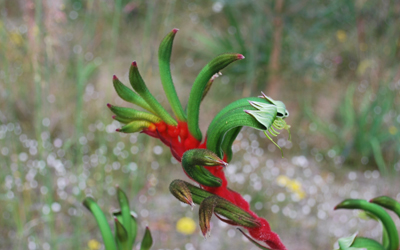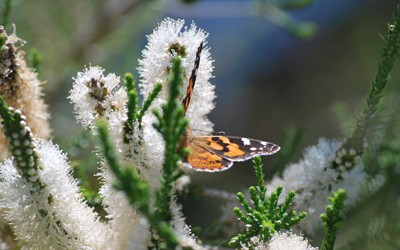Flora
The Swan Coastal Plain is richly endowed with biodiversity making Perth one of the most biodiverse cities in the world. Over 1500 plant species are found here, forming a wide variety of plant communities.
The main communities of the Canning River region include:
- Fringing forest communities
- Salt-marsh and shore-rush communities
- Bulrush communities
- Flooded Gum community
- Aquatic flora
- Non-vascular flora
- Other
- Threats to our flora
- Grow your own native garden
Fringing forest communities
Three communities comprise the fringing forest of the wetland:
- The Saltwater Sheoak-Paperbark community which fringes both the estuarine section of the river and some of the salt-marshes at higher elevations and lower salinity.
- The Freshwater Paperbark community is found in swampy areas, some of which have developed only recently with the advent of storm water drains and associated widespread clearing.
- The Freshwater Paperbark-Flooded Gum community occurs on riverbanks upstream from Kent Street Weir, where freshwater conditions are experienced.
Salt-marsh and shore-rush communities
The salt-marsh zone comprises four plant communities:
- The Samphire community occurs on tidal flats, often adjacent to barren salt-pans.
- The Shrubby Samphire community is found adjacent to the Samphire community but at higher elevations.
- The Club-rush community which is normally only found as part of the samphire community.
- The Shore-rush community is found in areas which are more frequently inundated by tidal water, where ground levels are higher and salinity is lower.
Flooded Gum community
Flooded Gums occupy sections of the flood plain.
Aquatic flora
The waters of the area support a high diversity and abundance of algae with over thirty species. Other aquatic flora include patches of seagrass, a species of macroalgae, three phytoplankton species and weeds such as Hydrocotyle.
Other
Countless other species occupy the region with new discoveries being made every year. For example, over 144 different species have been identified in Bannister Creek Reserve alone – including many different Orchids and Banksias, Grass trees, Prickly moses, Wattles, Zamia palms, Banjines, Joyweed, Kangaroo paws, Hakeas, Dogweed, Tea trees, Lobelias, Hollyhocks, Peppermint, Marris, Tuarts and Jarrah.
Acknowledgements: City of Canning and Department of Parks and Wildlife.
- Altered hydrological systems and changes to river flows caused by vegetation clearing, acid groundwater, surface water storage and groundwater extraction
- Nutrient run-off into wetlands and waterways
- Invasive plants and animals
- The spread of Phytophthora (Dieback)
- Land clearing and development, resulting in habitat loss and fragmentation
- Fire, particularly unplanned fire
- Use by unauthorised vehicles, illegal cutting of vegetation, firewood collections and rubbish dumping
Threats to our Flora
Want to grow your own native garden?
Check out the list of native plant nurseries here and also check out the grow local plants page.



